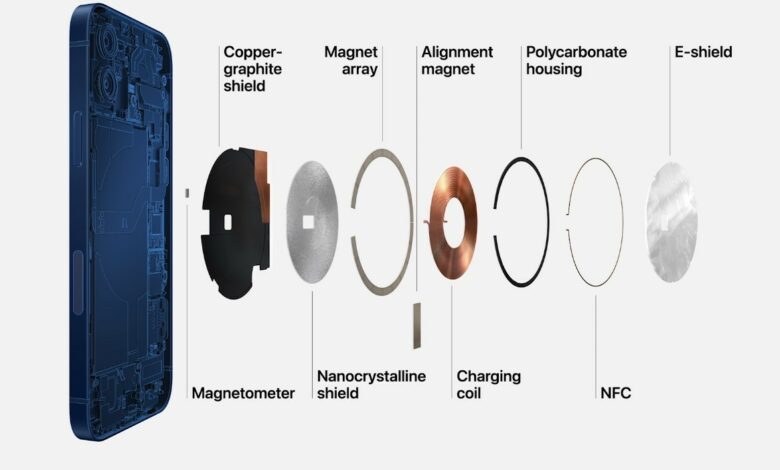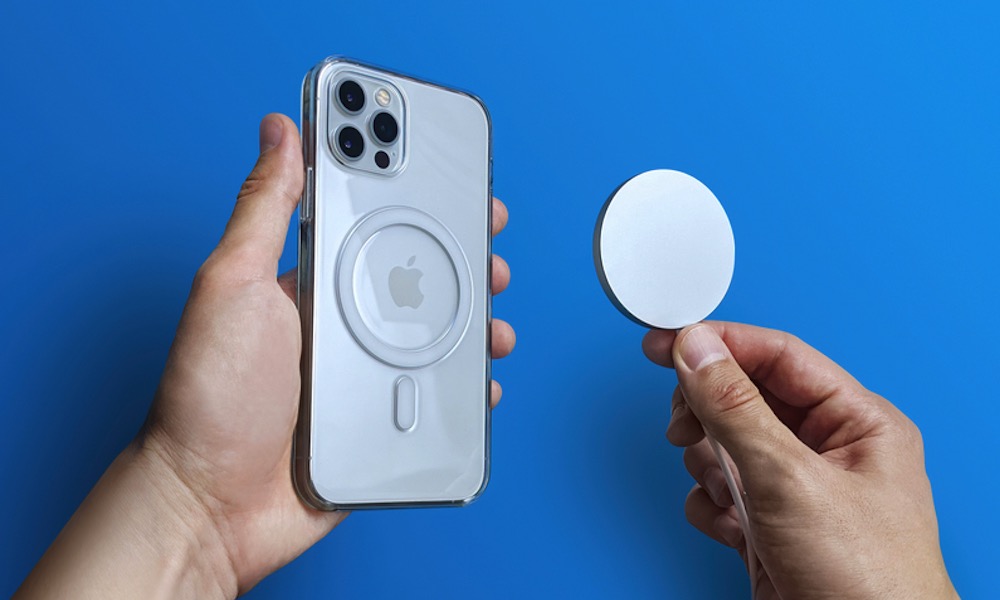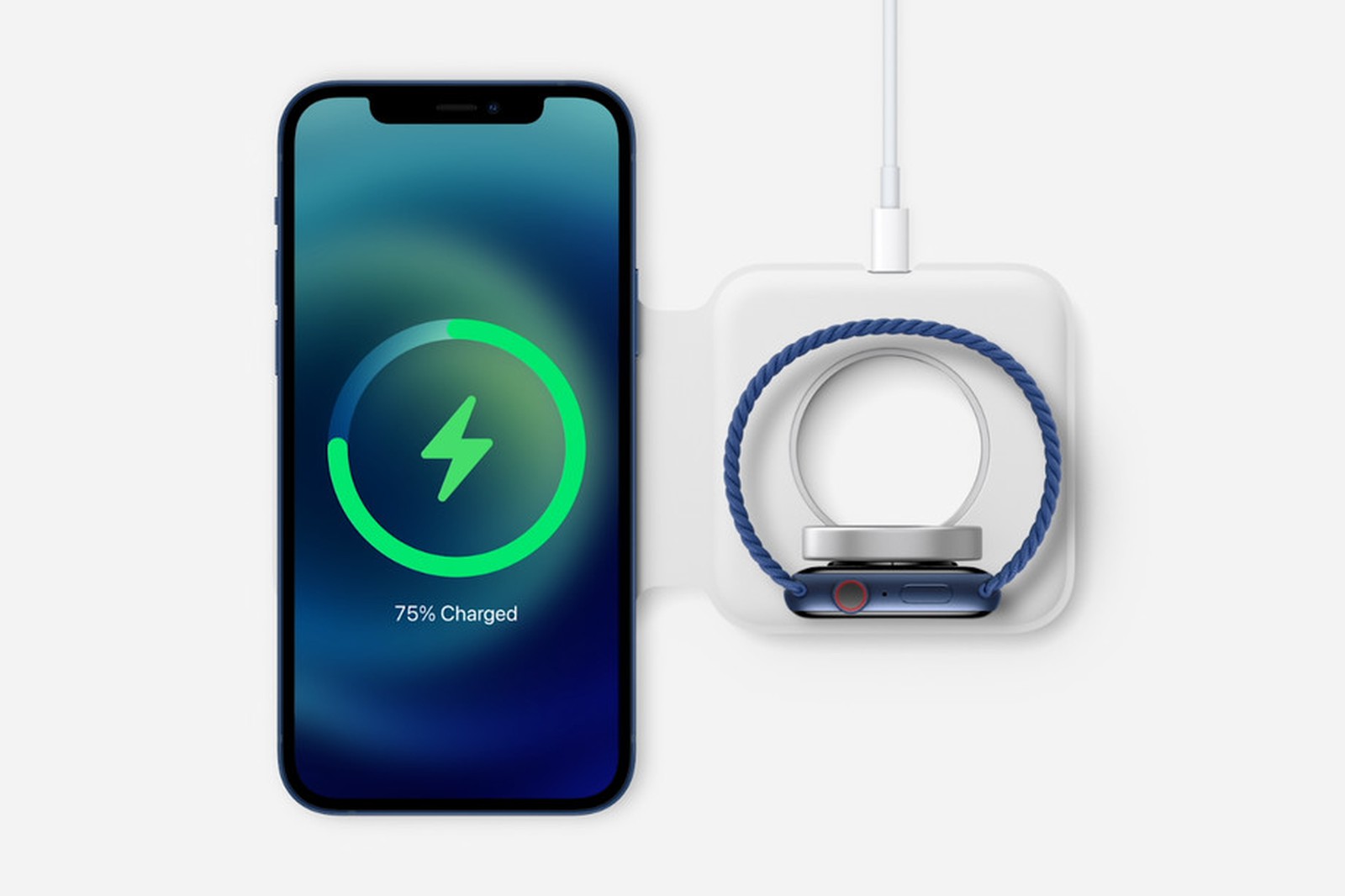
Apple recently reintroduced MagSafe wireless charging which is a decade old wireless charging technology for its new line of iPhone 12 models. MagSafe is Apple‘s proprietary technology which was first launched in January 2006 for MacBook Pro, it was the first MacBook with Intel’s SOC. The original version of MagSafe had a magnetic powered connector that was glued to the MacBook instead of wires attached to a power socket. Apple introduced wireless charging technology because they wanted to evade damages that may occur because of tripping over wire or loosening of power sockets.
They were terminated because of repeated complaints about loss of data due to magnets from credit cards and other magnetic devices. There were other complaints regarding overheating and insulation, which led to its discontinuation in 2016. MagSafe will provide a shack for all new accessories that can be easily attached to it and delivers up to 15 W of power. Apple has also come up with accessories that can provide easy access to MagSafe like clear pouches which are attached to the rear of the phone.
What does the new research say about MagSafe?
A research study conducted by the American heart association (AHA) deduced that devices with Apple‘s MagSafe technology can cause clinical interference in the working of cardiac devices like pacemakers. If an object is placed too close to the skin or where the cardiac device is inserted like breast pockets it can hamper the working of the devices.
The AHA said, “ Apple’s iPhone 12 pro max MagSafe technology can cause magnetic interference on Cardiac Implantable Electronic Devices (CIEDs) and has the potential to inhibit life-saving therapy”. It can reproduce a magnetic field strength of 50 gauss or more. Gaussis the unit of measuring electromagnetic or magnetic induction, which is the production of a force across the electrical device which changes the magnetic field. Carl Friedrich Gauss was a German scientist who has done a lot of work in the field of mathematics and physics.
What is MagSafe made up of?
MagSafe has a ring of magnets built over it so that it can connect to devices which also has a ring of magnet built inside it. A total of 18 rectangular magnets are placed circularly under the wireless charging coil in every device. When MagSafe sticks to a phone the charging oils inside both devices are perfectly alignedso that charging can take place. According to Apple, MagSafe has in all nine layers of different metals that make up a wireless charger.
The first layer that attaches itself to an iPhone is a magnetometer followed by a copper graphite shield. A magnetometer is used to measure the strength and direction of the magnetic field near the instrument. To protect the charging coil from damage nano-crystalline shield followed by a circular magnetic array along with an alignment magnet is placed before the charging coil. Nanocrystalline sheets offer low loss, high permeability and reduce electromagnetic interference of magnetic field so that nearby objects don’t get affected.
Nanocrystalline sheets are ideal for soft magnets that are used in mobile phones and they make devices slim. The alignment magnet helps in aligning the charging coil of MagSafe and iPhone. Charging is impossible unless alignment is accurate between MagSafe and iPhone. To further protect the charging coil polycarbonate housing, NFC and E shield are put together which in all comprise the MagSafe. NFC or near field communication device helps iPhone to identify MagSafe so that it can charge itself.
What is a pacemaker?
A pacemaker or a cardiac device is a machine that helps people with cardiac troubles in controlling, monitoring and regulating their hearts. The job of a cardiac device is to keep our heartbeat normal. They are of different kinds like pacemaker, CIED etc. Few devices like pacemakers use electric impulse to make the heart contract and produce a beat. What a pacemaker does is it replaces the role of the sinus node in our body if it is malfunctioning.
The sinus node of the heart is our natural pacemaker which is found in the upper right chamber or atrium. The sinus node is a cluster of cells that sends an electrical impulse to the heart so that it contracts and pumps blood. It sends electrical signals that travel from cell to cell, right through the heart until it reaches the atrioventricular node. The atrioventricular node is a gateway that allows the electric signal to pass through the ventricles. The working of these devices can be hampered if a magnet is placed in their vicinity. If a magnet inhibits working it is called magnetic inhibition or magnetic reversion mode.
How does MagSafe inhibit pacemaker’s working?
Whenever a magnet is placed over a pacemaker it reprograms it into asynchronous mode. It need not turn the pacemaker off but it’s advised against. Magnet is many times used to check if the battery of the pacemaker needs replacement. If a pacemaker is put on a cardiac patient’s skin asynchronous mode is turned on. The asynchronous mode in layman’s language means the pulse generator is delivering a pacing stimulus that is at a fixed rate.
It is dangerous because the asynchronous mode is not taking into account changing dynamics of the body and continues to deliver a pacing cadence regardless of the damage incurred. Pacemakers have sensors that change modes according to the needs of body. If asynchronous mode is turned on it is done under strict supervision of medical professionals or if patient is undergoing a surgical procedure. If asynchronous mode is turned on without supervision it can be lethal and jeopardise the patient’s life.
The research done by AHA researchers had two elements- in vivo and ex vivo. While researching the in vivo element researchers placed iPhone 12 pro max directly on the skin of patients who had pacemaker implanted in them. The pacemaker reported 100% magnetic interference in patients. While researching the ex vivo element researchers used CIED devices manufactured by famous companies like Abbot, Medtronic and Boston scientific.
They put iPhone 12 pro max at the vicinity of 1.5 cm from boxed and unopened CIEDs. Every device reported a magnetic interference of 100%. This is why cardiac patients with implanted cardiac devices are advised against their use. The research does not point out that MagSafe kills cardiac patients, but it cautions people against its use.
So what did Apple say about these reports?
Apple initially denied claims of risk to cardiac patients, saying that it does not pose a greater risk of magnetic interference. But this means that they did agree to a non-lethal degree of interference. Later Apple updated its statement and included information about how to use MagSafe so that it doesn’t interfere with the working of pacemakers and defibrillators. They advised people to not keep MagSafe close to their cardiac devices. They instructed a distance of more than 6 inches without charging and 12 inches while wireless charging.
The company has also advised patients with cardiac problems to consult their physicians before buying MagSafe. In short, Apple is not denying claims of health risk of a greater degree that Magsafe poses. Also, the magnets are not only inserted in MagSafe but the magnets are also inserted in the back of iPhone 12 pro max. So if cardiac patients at all should use these new Apple products they have to exercise a lot more caution than instructed on the website. The hazards of turning on asynchronous mode without supervision are communicated above.




